Generating B2B Intent Contact Data After Evaluating GDPR and CAN-SPAM Compliance
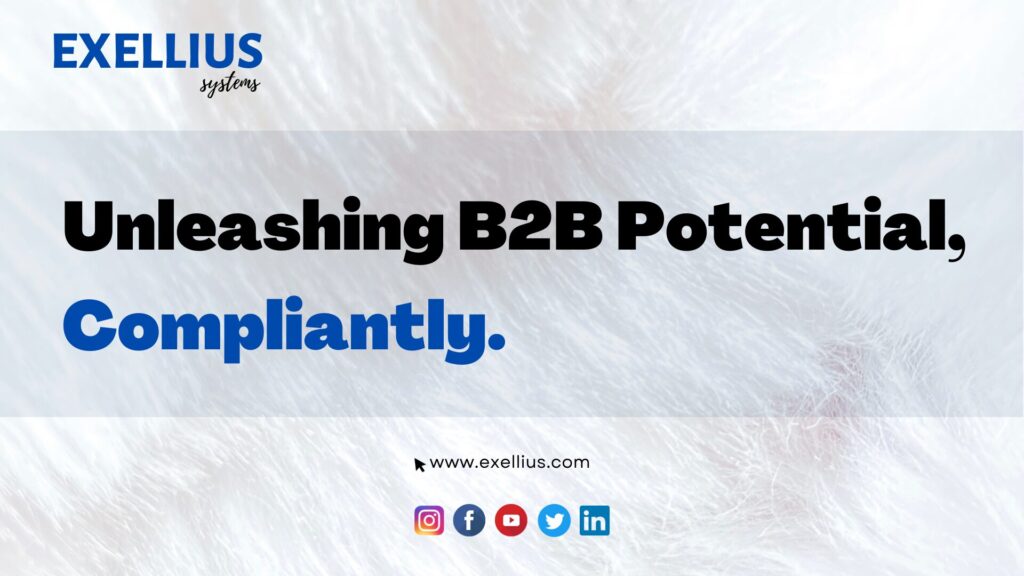
B2B Intent Contact Data
Why GDPR, CAN-SPAM, and ISO are Crucial for the B2B Industry
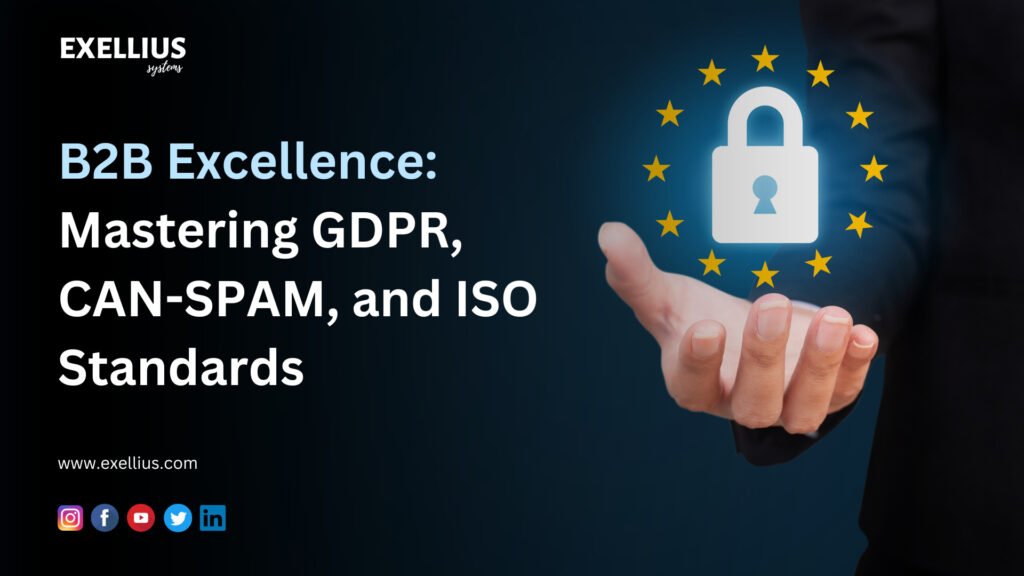
GDPR-CAN-SPAM-ISO
Exellius Systems Expands its Global Presence with New Office in Dover, DE

Dover, DE – June 8, 2023 – Exellius Systems, a leading provider of cutting-edge technology solutions, is pleased to announce the opening of its new office located at 8 The Green Suite #15256, Dover, DE 19901, United States. This expansion is a testament to Exellius Systems’ rapid growth and commitment to serving its clients more effectively. As Exellius Systems Continues to Grow Rapidly The new Dover office marks an important milestone for Exellius Systems as it seeks to broaden its reach and strengthen its presence in the United States. By establishing a strategic location in Dover, the company aims to provide enhanced support and solutions to its growing customer base in the region. The office’s convenient location and state-of-the-art facilities will enable Exellius Systems to collaborate closely with clients. Fostering innovation and accelerating business growth. “We are thrilled to open our new office in Dover, DE,” said Atharva G, Director of Exellius Systems. “This expansion not only allows us to better serve our existing clients in the United States but also positions us for further growth and expansion opportunities. We are confident that this move will help us deliver exceptional services and solutions to our valued customers.” Exellius Systems‘ expansion in Dover is part of its broader global growth strategy. The company has seen tremendous success in recent years, fueling its ambition to establish a stronger presence. In international markets. With plans to open new offices in the United Kingdom in the near future, Exellius Systems is poised to bring its industry-leading technology solutions to clients across Europe. The decision to expand into the UK market reflects Exellius Systems’ commitment to staying at the forefront of innovation and serving its global clientele. The new UK offices will allow the company to leverage the rich talent pool and technological advancements in the region, enabling it to provide bespoke solutions tailored to the specific needs of the European market. It remains dedicated to delivering exceptional value and empowering organizations with transformative technology. By expanding its physical presence, the company aims to forge stronger relationships with its clients, foster collaboration, and create new opportunities for success. About Exellius Systems: Exellius Systems is a leading provider of cutting-edge technology solutions, offering a wide range of services to empower organizations in achieving their digital transformation goals. With a focus on innovation and client success, Exellius Systems combines expertise in software development, artificial intelligence, and data analytics to deliver impactful solutions across various industries. For media inquiries, please contact: Atharva Gandhure Media Partnership Director Exellius Systems Email: atharva.g@exellius.com Phone: +1 123-456-7890 Note: The information provided in this press release is accurate at the time of release (June 8, 2023). Please refer to the Exellius Systems website for the latest updates and announcements.
Account Based Marketing vs. Demand Generation
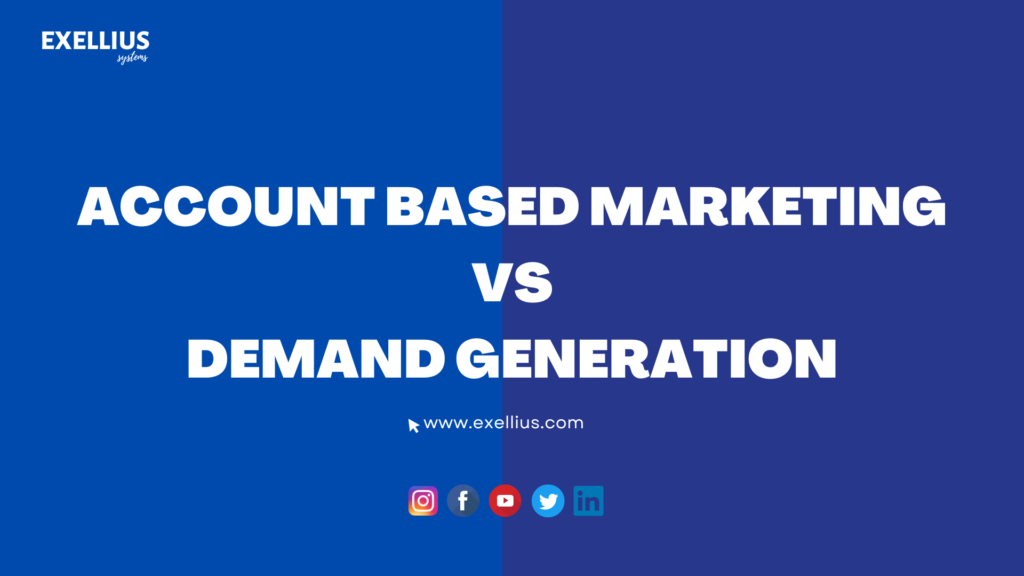
Outline Account Based Marketing vs. Demand Generation Account-Based Marketing (ABM) and Demand Generation are two popular marketing strategies used by businesses to drive growth and achieve their marketing objectives. While both approaches aim to generate leads and revenue, they differ in their focus, targeting methods, and overall approach. In this article, we will delve into the nuances of ABM and Demand Generation, understand their key components, and explore how they can be effectively utilized to maximize results. Understanding Account-Based Marketing (ABM) Definition and Purpose Account-Based Marketing (ABM) is a strategic approach that focuses on targeting specific high-value accounts and treating them as individual markets. Unlike traditional lead generation methods that cast a wide net to capture potential leads, ABM aims to engage and nurture a select group of key accounts by delivering personalized, tailored experiences throughout the customer journey. The goal of ABM is to establish strong relationships with target accounts, increase customer lifetime value, and drive revenue growth. Key Components of ABM ABM involves a multi-dimensional approach that requires collaboration between marketing and sales teams. Key components of ABM include: Exploring Demand Generation Definition and Purpose Demand Generation refers to the process of creating awareness, interest, and demand for a company’s products or services. It focuses on generating leads and nurturing them through the marketing funnel until they are ready to make a purchase. Demand Generation strategies aim to attract a wide audience, educate them about the brand’s value proposition, and engage them through various marketing channels. The ultimate goal of demand generation is to drive conversions and revenue growth. Key Components of Demand Generation Demand Generation encompasses a range of activities and tactics designed to capture and nurture leads. Key components of demand generation include: Differentiating Account Based Marketing VS Demand Generation While both ABM and Demand Generation aim to generate leads and revenue, there are distinct differences between the two strategies. Targeting Approach ABM focuses on targeting a select group of high-value accounts, treating them as individual markets. On the other hand, Demand Generation takes a broader approach by targeting a wide audience and nurturing them through the marketing funnel. Focus on Accounts vs. Leads ABM places emphasis on building relationships with key stakeholders within target accounts. It prioritizes quality over quantity and aims to deepen engagement with a smaller number of high-potential accounts. In contrast, Demand Generation focuses on generating and nurturing leads, casting a wider net to capture a larger pool of potential customers. Personalization and Customization ABM is highly personalized and customized. It tailors marketing messages, content, and campaigns to address the specific needs and pain points of individual target accounts. Demand Generation also utilizes personalization but on a broader scale, aiming to resonate with a larger audience segment. Measurement and ROI Both ABM and Demand Generation require measurement and tracking of key metrics to assess their impact. However, the metrics differ. ABM focuses on pipeline acceleration, deal velocity, and revenue generated from targeted accounts. Demand Generation measures metrics such as website traffic, conversion rates, and marketing-qualified leads. Choosing the Right Strategy for Your Business When deciding between ABM and Demand Generation, it’s essential to consider the specific needs and goals of your business. Here are some factors to consider: Considerations for ABM Considerations for Demand Generation Combining ABM and Demand Generation While ABM and Demand Generation are distinct strategies, they can be complementary and used together to maximize results. Integrating both approaches allows businesses to leverage the benefits of personalized account-based targeting while still capturing a wider audience. Here are some benefits and best practices for integrating ABM and Demand Generation: Benefits of Integration Best Practices for Integration By combining ABM and Demand Generation, businesses can take advantage of the strengths of each strategy and achieve a comprehensive marketing approach that drives revenue growth and maximizes ROI. Conclusion Account-Based Marketing (ABM) and Demand Generation are two distinct but valuable marketing strategies. While ABM focuses on personalized engagement with high-value accounts, Demand Generation targets a broader audience to generate leads and drive conversions. Both approaches have their benefits and can be integrated to maximize results. Understanding your business goals, target audience, and available resources will help you choose the right strategy or combination of strategies for your organization’s success. FAQs 1. What is the main difference between ABM and demand generation? ABM focuses on targeting specific high-value accounts and personalizing marketing efforts for them, while demand generation aims to attract and engage a broader audience to generate leads. 2. Can ABM and demand generation be used together? Yes, ABM and demand generation can be integrated to create a comprehensive marketing strategy that combines personalized account targeting with broader lead generation efforts. 3. How do you measure the success of ABM and demand generation? ABM success can be measured through metrics like pipeline acceleration, deal velocity, and revenue generated from target accounts. Demand generation success can be measured through metrics like website traffic, conversion rates, and marketing-qualified leads. 4. Which strategy is more suitable for B2B companies? Both ABM and demand generation are valuable for B2B companies. The choice depends on factors like target account value, sales cycle length, and available resources. Some B2B companies may find a combination of both strategies to be the most effective approach. 5. How can I get started with ABM or demand generation? To get started with ABM or demand generation, assess your business goals, target audience, and available resources. Develop a strategy, align your marketing and sales teams, and leverage relevant tools and technologies to implement your chosen approach effectively. Know more about our Media Partner: Media Martech
How to Boost Your B2B Sales with AI
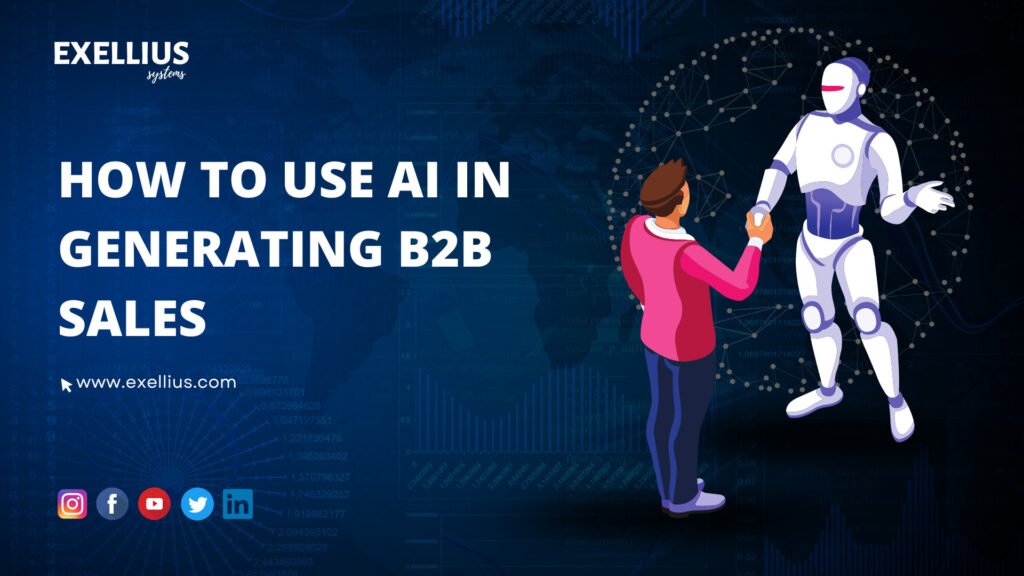
Introduction In today’s fast-paced business environment, companies need to leverage every tool available to stay ahead of the competition. One of the most powerful tools at your disposal is b2b sales artificial intelligence (AI), which can help you automate and streamline your sales process to drive more revenue and improve customer satisfaction. But how exactly can you use AI in generating B2B sales? In this guide, we’ll explore some of the most effective strategies for leveraging AI. To optimize your sales process and maximize your revenue. Whether you’re just getting started with AI or you’re looking to take your existing AI capabilities to the next level, you’ll find plenty of valuable insights and actionable tips in this guide. How to use AI in Generating B2B Sales Here are some of the most effective strategies for using AI to generate B2B sales: 1. Lead Generation One of the most important aspects of B2B sales is generating high-quality leads. With AI, you can streamline and optimize your lead generation process to identify the most promising prospects and nurture them into paying customers. Some of the most effective AI-powered lead generation strategies include: 2. B2B Sales Forecasting Another key area where AI can make a big impact is sales forecasting. By analyzing historical sales data and customer behavior, AI can help you predict future sales trends and identify opportunities for growth. Some of the most effective AI-powered sales forecasting strategies include: 3. B2B Sales Automation AI can also help you automate many aspects of your sales process, from lead nurturing to customer retention. By using AI-powered tools and platforms, you can free up your sales team to focus on high-value activities while AI takes care of the routine tasks. Some of the most effective AI-powered sales automation strategies include: 4. Personalization Finally, AI can help you personalize your sales process to better meet the needs and preferences of individual customers. By analyzing customer data and behavior, AI can help you tailor your messaging, content, and offerings to each customer’s unique needs and preferences. Some of the most effective AI-powered personalization strategies include: FAQs Q: Is AI really necessary for B2B sales? A: While AI is not strictly necessary for B2B sales, it can provide a significant competitive advantage by automating and streamlining various aspects of the sales process. By leveraging AI-powered tools and platforms, you can generate high-quality leads, forecast sales trends, automate routine tasks, and personalize your sales process to better meet the needs and preferences of your customers. Q: How can I get started with using AI for B2B sales? A: Getting started with AI for B2B sales can seem daunting, but there are many resources available to help you get started. Consider attending webinars or conferences on the topic, or hiring a consultant or agency that specializes in AI-powered sales. Additionally, many AI-powered sales tools and platforms offer free trials or demos, allowing you to test them out and see how they can benefit your business. Q: What are some common challenges associated with using AI for B2B sales? A: While AI can provide many benefits for B2B sales, there are also some challenges associated with its use. These include the need for specialized technical expertise, the risk of relying too heavily on AI and losing the human touch, and concerns around data privacy and security. To overcome these challenges, it’s important to work with experienced AI professionals, establish clear guidelines and protocols around AI usage, and prioritize data privacy and security in all aspects of your sales process. Q: How can AI help with customer retention? A: AI can help with customer retention by analyzing customer data and behavior to identify customers who are at risk of churning, and taking proactive steps to engage with them and address their concerns. AI-powered customer retention tools can also provide personalized recommendations and incentives to encourage customers to stay loyal to your brand. Conclusion AI has the potential to revolutionize the B2B sales process, helping companies automate and streamline various aspects of sales to generate more revenue and improve customer satisfaction. By leveraging AI-powered lead generation, sales forecasting, sales automation, and personalization tools. You can optimize your sales process and stay ahead of the competition. With the right strategies and tools in place, you can take your B2B sales to new heights and achieve your business goals with greater efficiency and effectiveness.
Top 10 B2B Marketing Trends to Follow in 2023
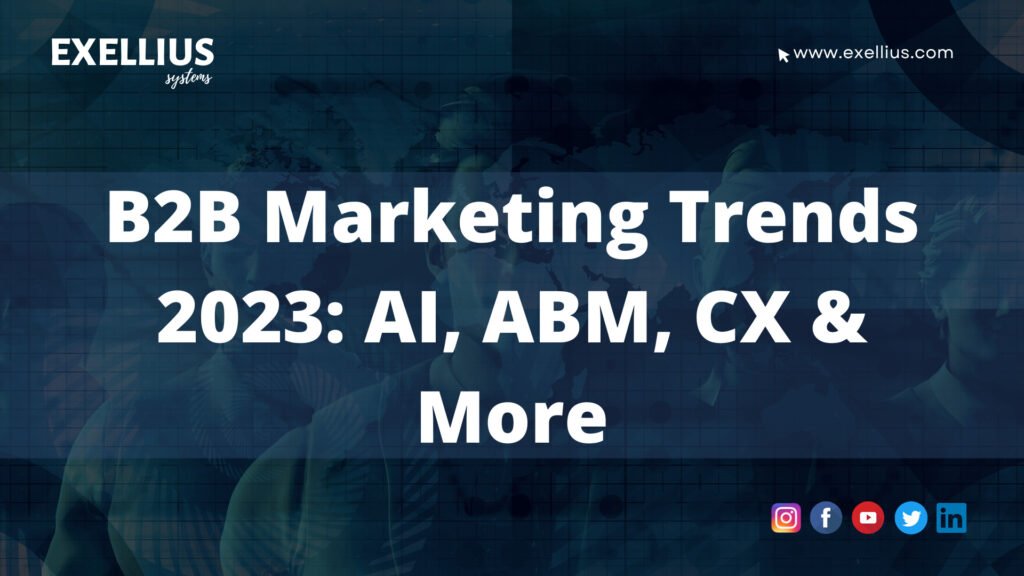
In today’s fast-paced digital world, creating high-quality content is essential for businesses to engage with their target audience and drive traffic to their website.
The Power of Content Syndication via Email
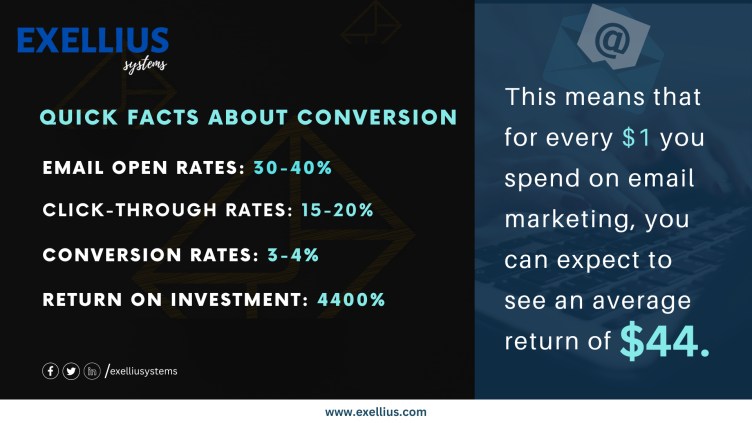
Content syndication is a powerful strategy for businesses and marketers looking to distribute their content to a wider audience. It involves republishing your content on multiple platforms and reaching new audiences who may not have found your content otherwise. In recent years, email has emerged as a popular channel for content syndication, and for good reason. In this blog, we’ll explore why content syndication via email is such a valuable tool for businesses, and how you can make the most of it. Why Email is an Effective Channel for Content Syndication Email is one of the most personal and direct ways to reach your audience. It’s a channel that your subscribers have opted into, meaning that they are interested in hearing from you and receiving your content. This makes email an ideal channel for content syndication, as you can be confident that your audience is interested in the content you’re sharing. Email is also an incredibly versatile channel that can be used for a variety of content types, from articles and blog posts to infographics and videos. Whether you’re looking to share thought-leadership pieces, promotional content, or educational resources, email is an effective way to reach your audience. Finally, email is an incredibly cost-effective way to reach your audience. Unlike other channels, such as paid advertising, you don’t have to pay to reach each individual subscriber. This makes email a great option for businesses and marketers looking to get the most bang for their buck. How to Make the Most of Content Syndication via Email Now that we’ve covered why email is such an effective channel for content syndication, let’s look at how you can make the most of it. Here are some tips to help you get started: Segment your audience: Segmenting your email list is crucial when it comes to content syndication. This allows you to target specific groups of subscribers with content that’s relevant to them. For example, you might have a list of subscribers who are interested in thought-leadership pieces, and another list of subscribers who are more interested in promotional content. By segmenting your audience, you can ensure that each group receives content that’s tailored to their interests. Personalize your content: Personalization is key when it comes to content syndication via email. This involves adding the subscriber’s name, location, or other relevant information to the email to make it feel more personal. Personalized content is more likely to be read, shared, and acted upon than generic content. Use a clear call-to-action (CTA): A clear call-to-action is essential for any email marketing campaign, including content syndication. Your CTA should be specific and actionable, and it should be placed in a prominent location within the email. This could be a link to your website, a request to share the content, or a prompt to sign up for a newsletter or other offer. Test and optimize: Finally, it’s important to test and optimize your content syndication strategy to ensure that you’re getting the best results. This might involve testing different subject lines, CTAs, or formats to see what works best for your audience. By continually testing and optimizing your strategy, you can improve your results and reach even more people with your content. Content syndication via email is an effective and cost-effective way to reach your audience and distribute your content. By following the tips outlined in this blog, you can make the most of this powerful strategy and reach new audiences with your content. For more content like this visit our Blogs Do follow us on LinkedIn
B2B Marketing 5 Key Trends in 2023
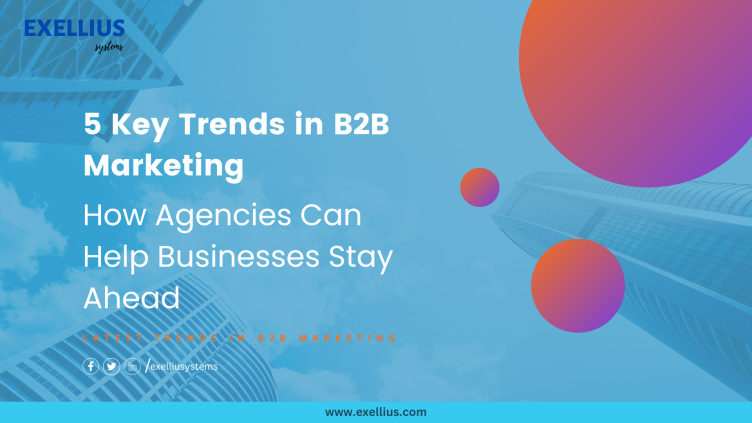
As the business world continues to evolve, the role of B2B marketing agencies has become increasingly important. These agencies help businesses of all sizes to develop effective marketing strategies that target other businesses, ultimately leading to increased sales and revenue. In this blog post, we’ll take a closer look at some of the latest trends in B2B marketing and how agencies can help their clients stay ahead of the curve. ABM is a targeted marketing strategy that focuses on a specific set of high-value accounts, rather than casting a wide net and hoping for the best. This approach allows agencies to create highly personalized campaigns that are tailored to the needs and pain points of each individual account. With ABM, businesses can see higher conversion rates, shorter sales cycles, and better alignment between sales and marketing teams. Social media has become an essential tool for B2B marketing, with over 90% of B2B marketers using social media to distribute content. However, the focus has shifted from simply creating content to building meaningful relationships with potential customers. Agencies can help businesses create engaging social media content, build targeted campaigns, and measure the ROI of their social media efforts. Video is an incredibly effective way to convey complex messages in a simple and engaging way. B2B marketers are increasingly using video content to educate and inform their target audience. With the rise of remote work and virtual events, video has become an essential tool for agencies to help their clients stand out in a crowded digital landscape. Interactive content, such as quizzes, assessments, and calculators, is a powerful way to engage potential customers and collect valuable data. B2B marketing agencies can help businesses create interactive content that provides a personalized experience for their target audience, ultimately leading to higher conversion rates. Artificial intelligence is transforming the way businesses approach marketing. With AI-powered tools, B2B marketers can gain deeper insights into their target audience, create more personalized content, and optimize their campaigns for maximum impact. B2B marketing agencies can help businesses leverage AI to stay ahead of the competition and drive growth. In conclusion, B2B marketing agencies play a crucial role in helping businesses develop effective marketing strategies that drive growth and revenue. By staying on top of the latest trends and technologies, these agencies can provide their clients with a competitive edge in a rapidly evolving digital landscape. For more content like this visit Exellius Systems Blog Page And Follow us on Linkedin



